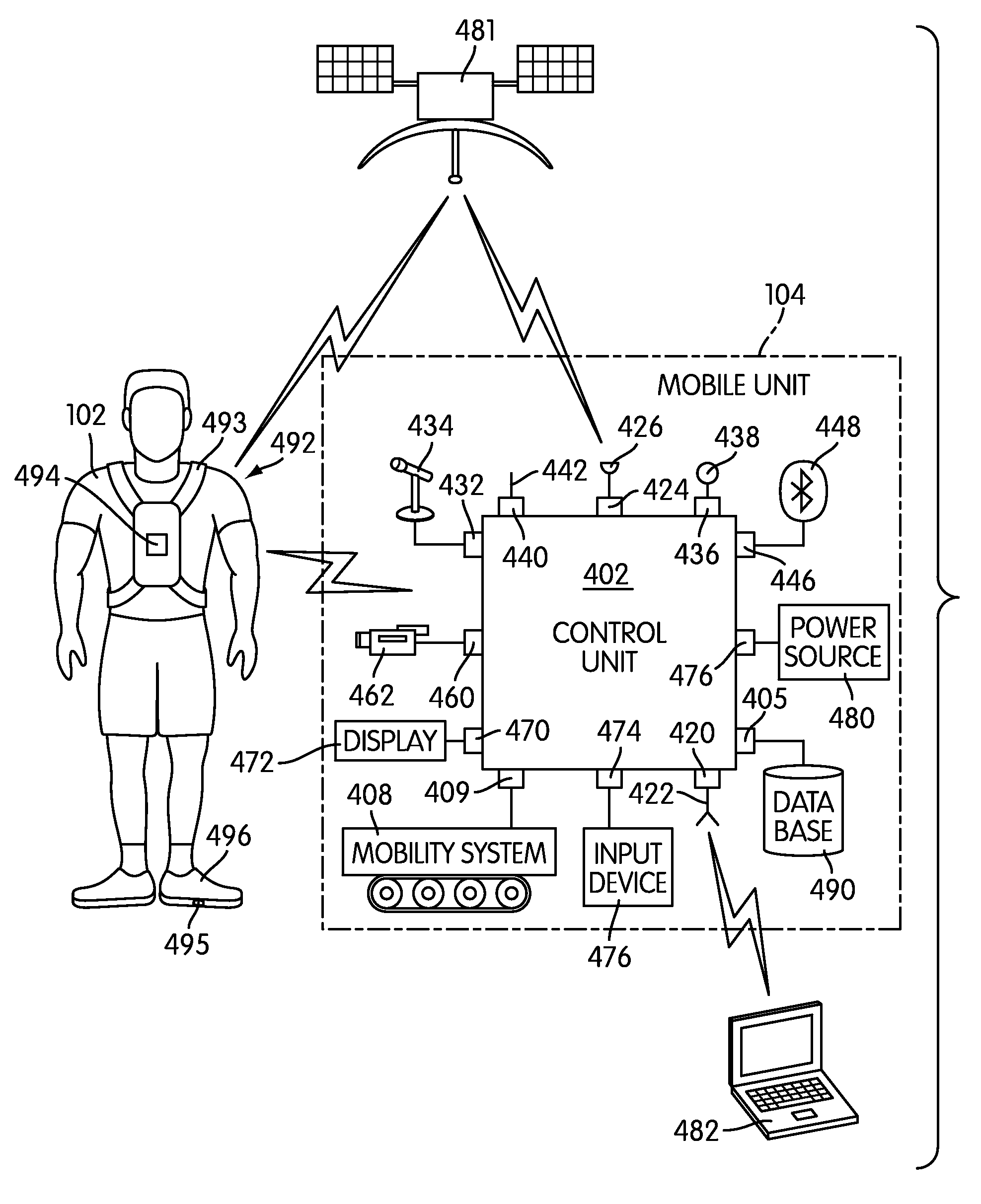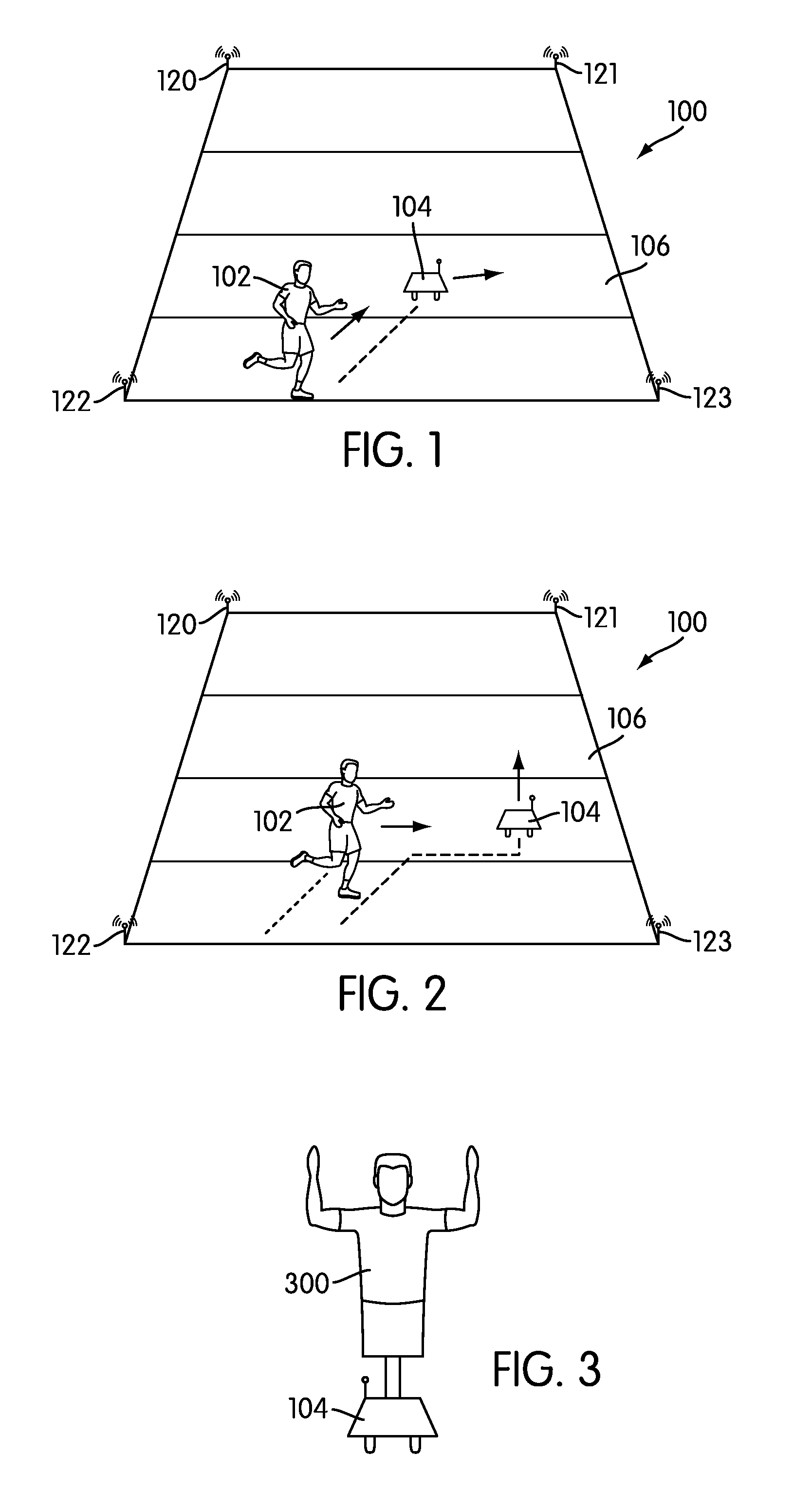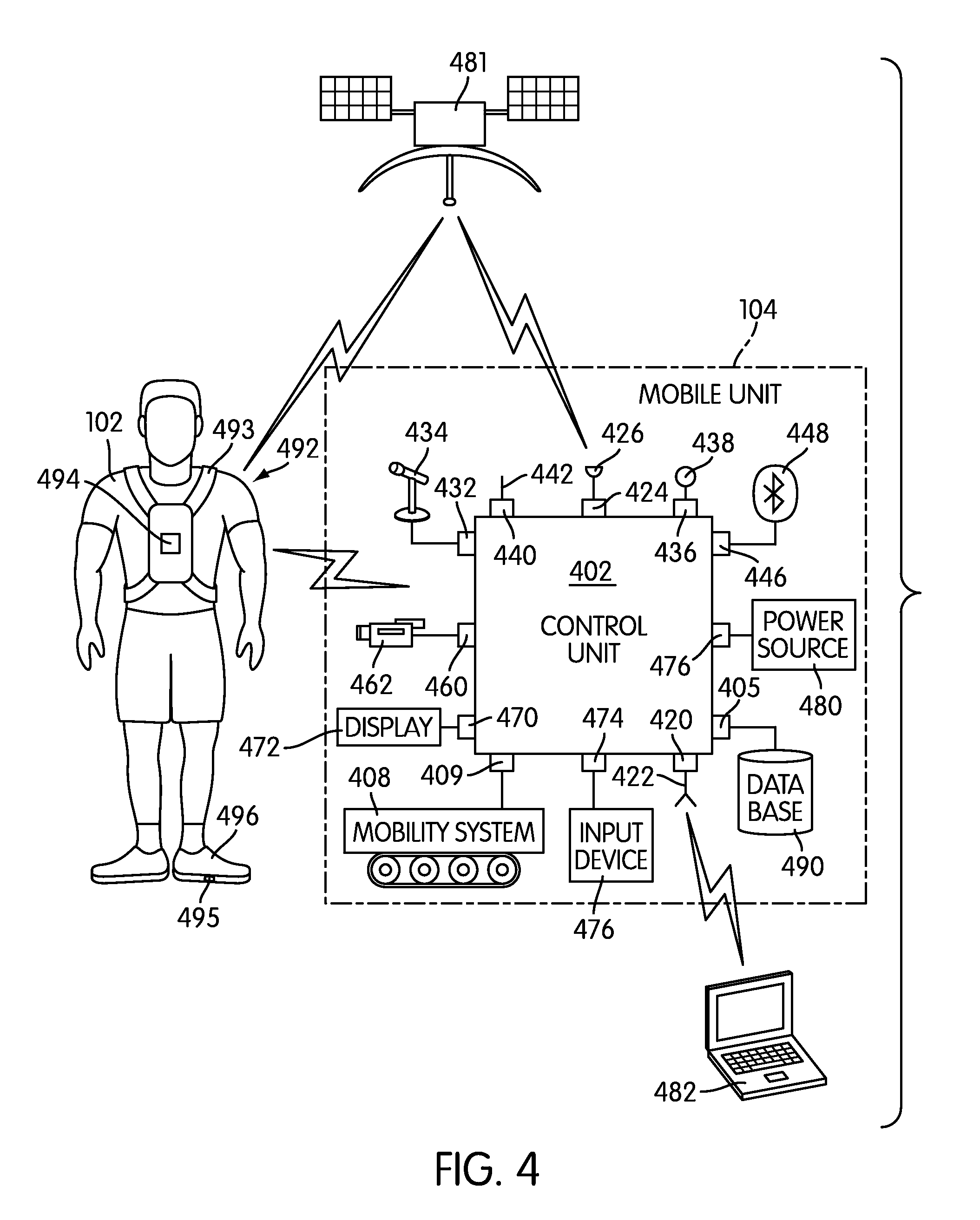Adaptive training system with aerial mobility system
a technology of training system and mobility system, applied in gymnastics, clubs, instruments, etc., can solve the problems of cumbersome trainer/trainee garments, inability to adjust, and inability to fully move,
- Summary
- Abstract
- Description
- Claims
- Application Information
AI Technical Summary
Benefits of technology
Problems solved by technology
Method used
Image
Examples
Embodiment Construction
[0075]FIGS. 1-2 are a preferred embodiment of training system 100. Training system 100 preferably includes practice field 106. The term ‘practice field’, as used throughout this detailed description, refers to any type of field, court, or generally open space that may be used for training activities. Examples of practice fields include, but are not limited to, football fields, soccer pitches or fields, lacrosse fields, basketball courts, as well as other types of fields and / or courts. Additionally, any open space that may be used for training activities such as those described throughout this detailed description may also be considered practice fields. For the purposes of clarity, practice field 106 is shown here as a football field.
[0076]Preferably, training system 100 may also include athlete 102. The term athlete is intended to include both professional athletes and amateur athletes. Generally, athlete 102 may be any person wishing to take part in an athletic training activity. T...
PUM
 Login to View More
Login to View More Abstract
Description
Claims
Application Information
 Login to View More
Login to View More - R&D
- Intellectual Property
- Life Sciences
- Materials
- Tech Scout
- Unparalleled Data Quality
- Higher Quality Content
- 60% Fewer Hallucinations
Browse by: Latest US Patents, China's latest patents, Technical Efficacy Thesaurus, Application Domain, Technology Topic, Popular Technical Reports.
© 2025 PatSnap. All rights reserved.Legal|Privacy policy|Modern Slavery Act Transparency Statement|Sitemap|About US| Contact US: help@patsnap.com



